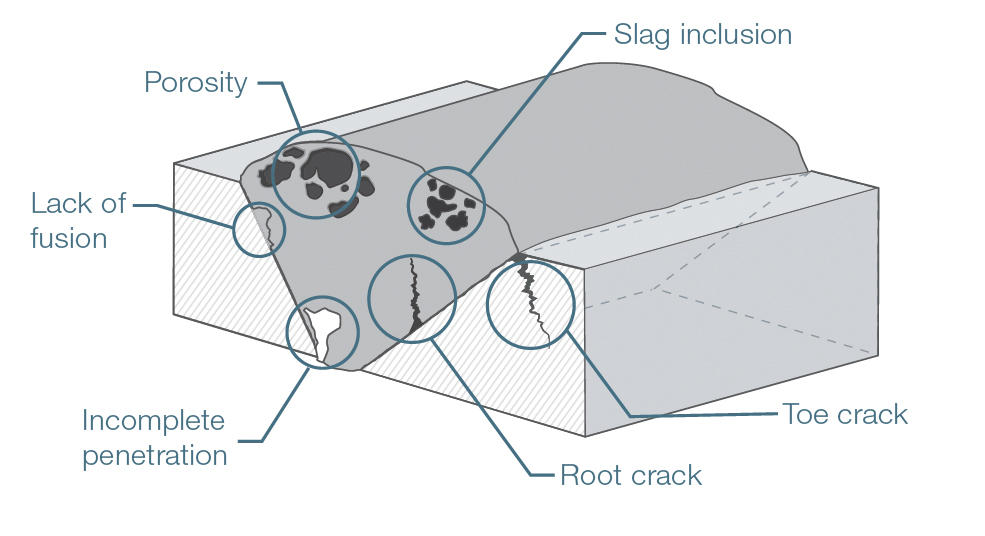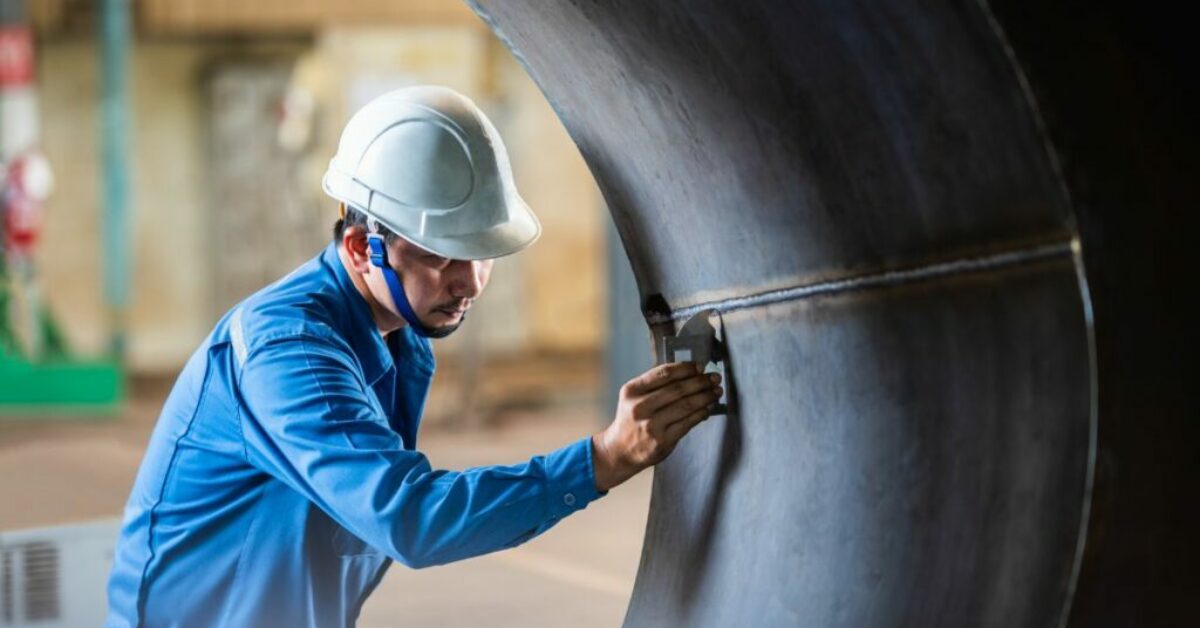A Comprehensive Guide to Welding Evaluation: Comprehending Specifications, Techniques, and Finest Practices for High Quality Guarantee
Welding examination plays a crucial duty in making certain the architectural stability and security of welded components, necessitating a complete understanding of sector criteria such as those developed by AWS and ASME. Numerous examination strategies, consisting of aesthetic and ultrasonic screening, are utilized to find prospective flaws that might compromise quality. Executing ideal techniques can substantially enhance functional dependability and foster count on amongst clients. As we explore these critical components, it ends up being evident that the effects of welding assessment extend much beyond conformity, inviting a more detailed evaluation of just how these processes form market criteria and methods.
Significance of Welding Examination
Welding evaluation plays an essential function in ensuring the stability and safety and security of welded structures. It is a crucial process that confirms that welds adapt predefined requirements, which is vital in different markets, consisting of building and construction, automotive, and aerospace. By conducting detailed inspections, possible problems such as fractures, insufficient combination, and porosity can be recognized early, protecting against catastrophic failures that could lead to accidents or costly repair work.
The significance of welding evaluation prolongs beyond mere compliance with policies; it also fosters trust with stakeholders. Clients and regulatory bodies anticipate guarantee that the frameworks they count on are developed to endure operational tensions. Effective welding examination techniques contribute to long-term durability and efficiency of the structures, ultimately leading to reduced upkeep prices.
Furthermore, welding evaluation promotes a society of quality within companies, motivating adherence to best techniques and constant improvement. By incorporating assessment processes right into the welding process, companies can boost their track record and establish themselves as leaders in quality control. To conclude, the importance of welding inspection exists in its ability to guard lives, make sure architectural integrity, and maintain market criteria, making it an essential element of welding procedures.
Key Market Standards
Making sure conformity with essential sector standards is crucial for maintaining the high quality and safety and security of welded structures. Numerous organizations establish these criteria to promote finest methods in welding and inspection - Welding Inspection Gilbert Arizona. Among one of the most identified are the American Welding Society (AWS) and the American Society of Mechanical Designers (ASME), which give comprehensive standards and requirements for welding processes and evaluation requirements
AWS criteria, such as AWS D1.1 for structural welding, overview demands for products, layout, and testing to guarantee the stability of welds. ASME codes, including ASME Section IX, govern the qualification of welders and welding procedures, guaranteeing constant high quality in commercial applications. Worldwide, the ISO 3834 basic highlights high quality demands for combination welding, supplying a structure for companies to show conformity with worldwide finest methods.
Compliance with these standards not only enhances the integrity of bonded structures however likewise reduces risks associated with structural failures. In addition, adherence to sector criteria is commonly a requirement for regulative approvals and can considerably influence task requirements. Inevitably, understanding and carrying out these crucial requirements are important for effective welding examination and quality control.
Evaluation Techniques Overview
Reliable welding assessment counts on a variety of techniques made to analyze the high quality and integrity of welds. These methods can be broadly classified into destructive and non-destructive testing (NDT) approaches. Non-destructive testing techniques, which are extensively chosen in the sector, permit the analysis of welds without endangering the integrity of the product.

Amongst the most commonly used NDT techniques are visual evaluation, ultrasonic testing, radiographic testing, and magnetic bit testing. Visual evaluation is typically the initial action in the examination procedure, allowing examiners to determine surface flaws and evaluate weld bead profiles.
Each technique has its very own benefits and constraints, making it necessary for assessors to choose the most suitable method based on the details needs of the job, the materials involved, and the criticality of the welds being evaluated. This mindful choice promotes and makes sure detailed assessments safety and top quality requirements in welding operations.
Common Issues and Their Ramifications
A complete understanding of typical defects in welds is critical for preserving structural honesty and safety and security in welded constructions. Welding defects can dramatically endanger the mechanical properties of the joint, leading to failings that might jeopardize both workers and equipment.
Typical issues include porosity, which shows up as little gas pockets entraped in the weld metal, damaging the general framework. Breaking is an additional prevalent problem, frequently arising from rapid air conditioning or inappropriate joint style, bring about tension focus that can cause disastrous failings. Incomplete blend occurs when the weld metal falls short to properly bond with the base material, developing weak points that might lead to separation under tons.
Various other notable problems consist of damaging, where the weld bead erodes the base metal, and slag incorporations, which can hinder the weld's strength. Each of these flaws has specific ramifications; for example, porosity can reduce ductility, while breaking straight influences tensile toughness. Identifying and comprehending these flaws throughout inspection is vital for guaranteeing and executing restorative procedures conformity with market requirements, eventually securing the architectural stability of welded assemblies.
Best Practices for Quality Assurance
Implementing best address practices for quality guarantee in welding procedures is necessary for attaining ideal results and reducing problems. One crucial practice is the facility of clear welding treatments that abide by market standards and requirements. These treatments must include comprehensive directions regarding material selection, joint prep work, and welding techniques to make sure consistency and quality.
Regular training and qualification of welding workers are also crucial. Proficient welders that understand the relevance of quality control are a lot more most likely to create audio welds. In addition, carrying out a robust examination program, consisting of both non-destructive and aesthetic testing (NDT), can aid determine defects early while doing i thought about this so, allowing for prompt restorative activities.

Last but not least, cultivating a culture of quality within the organization motivates employees to focus on quality in their work. By adhering to these best methods, organizations can improve the honesty of their welding procedures, inevitably leading to improved product quality and reduced costs connected you could try this out with rework and repair services.

Final Thought
In final thought, welding evaluation plays a vital duty in making certain the honesty and security of welded structures. By applying finest methods, organizations can boost dependability, reduce upkeep expenses, and cultivate trust fund amongst clients, inevitably contributing to successful welding procedures.
In addition, welding inspection advertises a culture of high quality within companies, motivating adherence to ideal methods and continual enhancement. In conclusion, the relevance of welding evaluation exists in its capability to guard lives, guarantee architectural dependability, and promote market criteria, making it a crucial element of welding procedures.
Among the most acknowledged are the American Welding Culture (AWS) and the American Society of Mechanical Designers (ASME), which provide in-depth guidelines and specs for welding procedures and examination criteria.
Ultimately, understanding and carrying out these vital criteria are important for efficient welding assessment and top quality guarantee.
Reliable welding examination depends on a range of techniques created to analyze the high quality and integrity of welds.